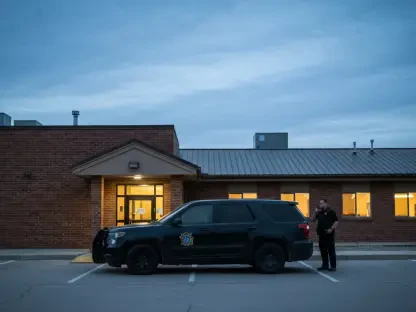As we dive into the complex world of aviation regulation and policy, I’m thrilled to sit down with Desiree Sainthrope, a legal expert with a deep background in drafting and analyzing trade agreements. With her extensive knowledge of global compliance and a keen interest in emerging technologies, Desiree brings a unique perspective to the pressing issue of looming air travel cuts proposed by the FAA. Today, we’ll explore the intricacies of these planned reductions, the political tensions surrounding them, the potential disruptions to holiday travel, and the broader economic implications for airlines and communities. Let’s unpack how these changes could reshape the aviation landscape and what they mean for travelers and policymakers alike.
Can you walk us through the FAA’s proposed plan for air travel cuts and what it aims to achieve?
Certainly, Simon. The FAA’s plan is a response to ongoing operational challenges, particularly staffing shortages at key facilities across the country. While the full details are still emerging, the core idea is to reduce flight operations at several major airports to better align with current capacity constraints. This isn’t about slashing services arbitrarily; it’s a strategic move to prevent delays and cancellations from spiraling out of control by proactively managing schedules. The plan targets some of the busiest hubs in the U.S., including Atlanta, Los Angeles, Houston, Chicago, and all three major airports in the New York City area. The goal is to stabilize the system, even if it means some tough trade-offs for travelers and airlines.
What are the main factors driving the FAA to implement these cuts at this particular time?
The primary driver is staffing issues at around 40 airports nationwide. We’re talking about shortages in critical roles like air traffic controllers and other operational staff, which have been a persistent headache for the FAA. These shortages lead to bottlenecks, especially at high-traffic locations, and the agency is trying to get ahead of the problem before it worsens. Timing-wise, I think they’re acting now because the holiday season is approaching, and they want to avoid a complete meltdown during peak travel periods like Thanksgiving. It’s a preemptive strategy, though not without controversy, as it shifts some of the burden onto airlines and passengers.
How are political leaders framing their responses to these proposed cuts, and what’s your view on the divide?
There’s a clear partisan split in how this is being discussed. Some Republican leaders are pointing fingers at Democrats, arguing that the potential disruptions stem from a failure to agree on a straightforward funding resolution. They’re framing it as a governance failure with massive consequences for the public. On the other side, Democratic senators are pushing back, suggesting that the fallout from these cuts is a shared problem that pressures all sides to find a solution. I think there’s truth in both perspectives—aviation policy is inherently bipartisan because it affects everyone, but the blame game often overshadows collaborative problem-solving. It’s frustrating to see politics delay action when the stakes are so high for travelers.
With Thanksgiving around the corner, how might these cuts impact holiday travel plans?
Holiday travel could take a significant hit if these cuts aren’t managed carefully. The Transportation Secretary has already warned that Thanksgiving could be ‘really rough’ if the situation drags on, and I think that’s a fair assessment. Travelers might face fewer available flights, longer wait times, and potentially higher fares due to reduced capacity. At worst, we could see cascading delays if the system gets overwhelmed. While contingency plans are likely in discussion, such as prioritizing certain routes or redistributing staff, the reality is that holiday demand often outstrips even the best preparations. It’s a tricky balance, and passengers should brace for some turbulence—metaphorically and maybe literally.
I’ve heard regional routes might bear the brunt of these cuts. Can you explain why that’s the case?
Yes, regional routes—those shorter flights often operated by carriers like United Express or American Eagle—are more vulnerable because they’re seen as less critical to the overall network compared to long-haul or hub-to-hub flights. These are often distances that people could reasonably drive, so the FAA and airlines might prioritize preserving capacity on routes that serve larger passenger volumes or international connections. Cutting regional flights impacts fewer people per cancellation, which makes it a less disruptive choice from a numbers perspective, even if it’s a lifeline for smaller communities. It’s a pragmatic but tough call.
What could be the economic ripple effects of reducing flights, especially on smaller regions?
The economic impact is a big concern, though hard numbers are still unclear. For airlines, fewer flights mean lost revenue from ticket sales, cargo, and ancillary services. For the broader economy, the hit could be significant in regions reliant on air connectivity for business and tourism. Smaller communities, in particular, could suffer if regional flights are cut, as they often depend on these routes for access to larger markets. It’s not just about dollars—it’s about jobs, local businesses, and the ability to attract investment. Without solid estimates yet, it’s hard to gauge the full scope, but the potential for localized economic pain is real.
Looking ahead, what’s your forecast for how these air travel cuts and the surrounding political dynamics might play out in the coming months?
I think we’re in for a bumpy few months, Simon. If the political stalemate persists, we could see these cuts become more entrenched, with deeper impacts on holiday travel and beyond. However, the public pressure—especially around Thanksgiving—might force a quicker resolution, as no one wants to be blamed for stranding families. On the policy side, I expect the FAA will refine its approach based on early feedback from airlines and travelers, possibly shifting cuts to minimize disruption. Long-term, though, this highlights a need for systemic investment in staffing and infrastructure to prevent these crises from recurring. My hope is that this serves as a wake-up call for more sustainable aviation planning, but I’m cautiously optimistic at best given the current gridlock.









